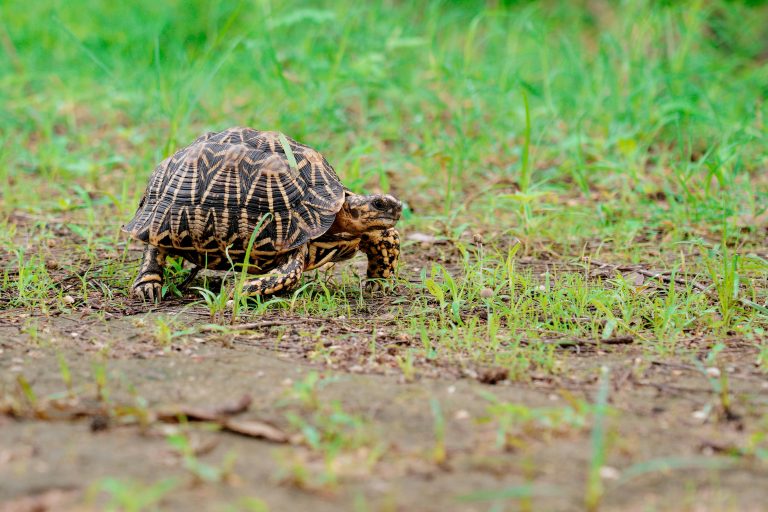200+ List Of Native Turtles Throughout USA [By State]
The United States boasts an unparalleled diversity of turtle species, surpassing any other region on the globe. With diligent efforts from wildlife authorities, these remarkable reptiles are safeguarded while simultaneously promoting public awareness and education about their significance.
Across the 15 prominent states of the USA, hundreds of turtle species thrive. Among the most prevalent and well-known ones are:
- Box turtle
- Bog turtle
- Wood turtle
- Spotted turtle
- Painted turtle
- Slider
- Cooter
- Diamondback terrapin
- Map turtle
- Musk turtle
- Mud turtle
- Snapping turtle
- Softshell turtle
- Sea turtles, and many more.
For all those turtle enthusiasts embarking on their journey as keepers, this article is an essential read. Without a solid understanding of a turtle’s native environment, habitat, and behaviors, it’s challenging to provide proper care. Delve into the following piece, which outlines native turtle species per state along with detailed profiles of each, laying the foundation for a fulfilling and responsible experience as a turtle keeper.
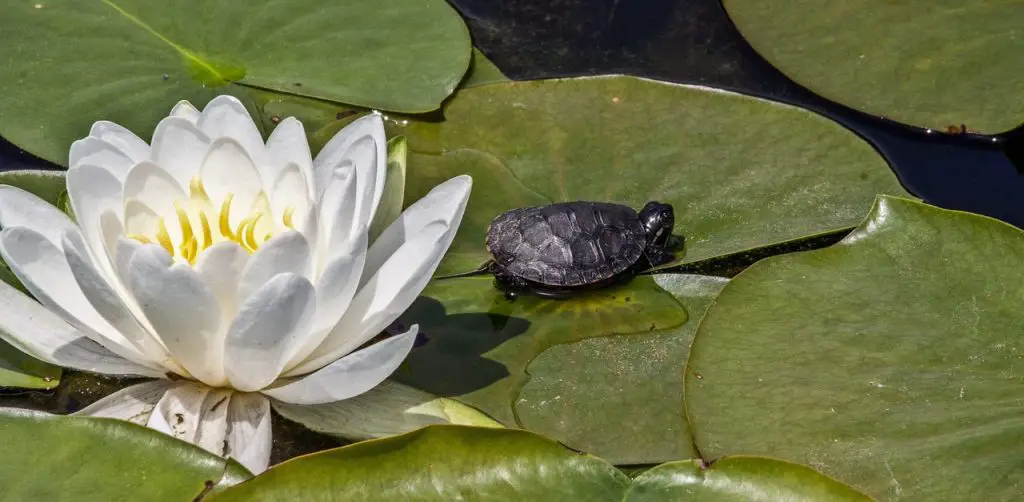
Let’s get started!
Native Turtles Of New York
New York holds a renowned reputation for its diverse turtle population, boasting a total of 20 distinct species, ranging from majestic sea turtles to the charismatic painted turtles, softshell turtles, box turtles, and bog turtles, among others.
Here’s a comprehensive list of native turtles found in New York:
- Eastern Mud Turtle
- Spotted Turtle
- Bog Turtle
- Wood Turtle
- Eastern Box Turtle
- Common Snapping Turtle
- Common Musk Turtle
- Common Map Turtle
- Northern Diamondback Terrapin
- Eastern Redbelly Cooter
- Yellow-Bellied Slider
- Red-Eared Slider
- Spiny Softshell Turtle
- Painted Turtle
- Blanding’s Turtle
- Green Sea Turtle
- Atlantic Hawksbill Sea Turtle
- Atlantic Ridley Sea Turtle
- Loggerhead Sea Turtle
- Leatherback Sea Turtle
With such a rich tapestry of turtle species, New York provides ample opportunities for enthusiasts and conservationists alike to appreciate and safeguard these remarkable creatures.
Native Turtles Of Texas
Texas boasts an impressive array of 29 distinct turtle species, with box turtles, map turtles, mud turtles, musk turtles, sliders, softshell turtles, and sea turtles capturing the attention of enthusiasts and conservationists alike.
Here’s the complete roster of native turtles found in Texas:
- Ornate Box Turtle
- Desert Box Turtle
- Three-Toed Box Turtle
- Chicken Turtle
- Missouri River Cooter
- Rio Grande Cooter
- Texas River Cooter
- Cagle’s Map Turtle
- Mississippi Map Turtle
- Ouachita Map Turtle
- Sabine Map Turtle
- Texas Map Turtle
- Eastern Mud Turtle
- Rough-Footed Mud Turtle
- Yellow Mud Turtle
- Common Musk Turtle
- Razorback Musk Turtle
- Big Bend Slider
- Red-Eared Slider
- Painted Turtles
- Alligator Snapping Turtle
- Common Snapping Turtle
- Midland Smooth Softshell Turtle
- Spiny Softshell Turtle
- Texas Diamondback Terrapin
- Green Sea Turtle
- Kemp’s Ridley Sea Turtle
- Hawksbill Sea Turtle
- Loggerhead Sea Turtle
With such a diverse tapestry of turtle species, Texas offers ample opportunities for exploration, appreciation, and conservation efforts to ensure the preservation of these fascinating creatures and their habitats.
Native Turtles Of New Jersey
New Jersey boasts a diverse collection of 18 native turtle species, each contributing to the rich biodiversity of the region. From the elusive bog turtle to the majestic sea turtles, these fascinating creatures capture the imagination of residents and visitors alike.
Here’s the comprehensive list of native turtles found in New Jersey:
- Bog turtle
- Eastern Box Turtle
- Northern Red-Bellied Cooter
- Northern Diamondback Terrapin
- Northern Map Turtle
- Eastern Mud Turtle
- Common Musk Turtle
- Eastern Painted Turtle
- Red-Eared Slider
- Common Snapping Turtle
- Eastern Spiny Softshell Turtle
- Spotted Turtle
- Wood Turtle
- Kemp’s Ridley Sea Turtle
- Atlantic Hawksbill Sea Turtle
- Atlantic Green Sea Turtle
- Leatherback Sea Turtle
- Loggerhead Sea Turtle
With such a diverse array of turtle species, New Jersey provides endless opportunities for wildlife enthusiasts to observe, appreciate, and contribute to the conservation efforts aimed at protecting these cherished inhabitants of the Garden State.
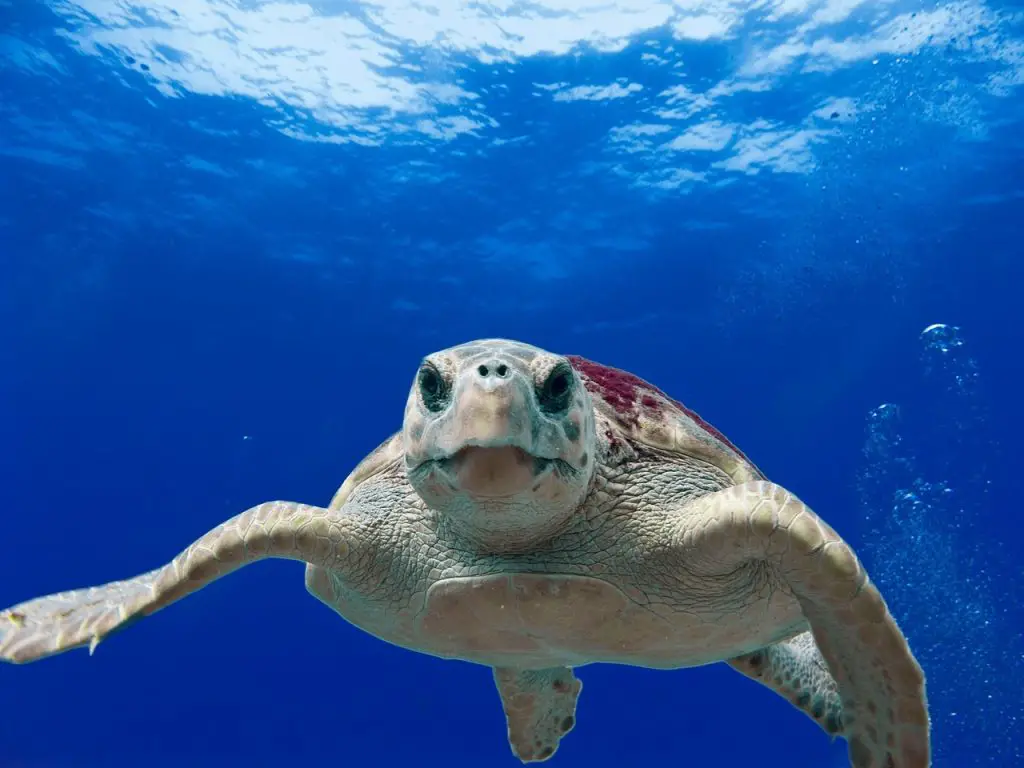
Native Turtles Of Florida
Florida is home to an impressive array of 30 native turtle species, encompassing a wide range of habitats and behaviors. From the iconic sea turtles to the elusive box turtles, these reptilian residents contribute to the state’s rich biodiversity and captivate the hearts of nature enthusiasts.
Here’s the comprehensive list of native turtles found in Florida:
- Chicken Turtle
- Red-Eared Slider
- Yellow-Bellied Slider
- Eastern Box Turtle
- Florida Box Turtle
- Gulf Coast Box Turtle
- Three-Toed Box Turtle
- Eastern River Cooter
- Florida Red-Bellied Cooter
- Peninsula Cooter
- Diamondback Terrapin
- Barbour’s Map Turtle
- False Map Turtle
- Eastern Mud Turtle
- Florida Mud Turtle
- Striped Mud Turtle
- Common Musk Turtle
- Loggerhead Musk Turtle
- Southern Painted Turtle
- Alligator Snapping Turtle
- Common Snapping Turtle
- Florida Softshell Turtle
- Gulf Coast Smooth Softshell Turtle
- Gulf Coast Spiny Softshell Turtle
- Spotted Turtle
- Green Sea Turtle
- Hawksbill Sea Turtle
- Leatherback Sea Turtle
- Loggerhead Sea Turtle
- Kemp’s Ridley Sea Turtle
With such a diverse array of turtle species, Florida offers endless opportunities for wildlife observation, conservation, and appreciation, ensuring the preservation of these magnificent creatures for generations to come.
Native Turtles Of Georgia
Georgia is a haven for turtle diversity, boasting an impressive 39 native species, surpassing any other state in sheer variety. Among the notable turtles that call Georgia home are the bog turtle, snapping turtle, softshell turtle, chicken turtle, painted turtle, slider, mud turtle, map turtle, musk turtle, cooter, terrapin, and sea turtle.
Here’s the full list of native turtles found in Georgia:
- Bog Turtle
- Florida Softshell Turtle
- Eastern Spiny Softshell Turtle
- Common Snapping Turtle
- Alligator Snapping Turtle
- Eastern Painted Turtle
- Western Painted Turtle
- Southern Painted Turtle
- Midland Painted Turtle
- Spotted Turtle
- Eastern Chicken Turtle
- Florida Chicken Turtle
- Western Chicken Turtle
- Eastern Mud Turtle
- Florida Mud Turtle
- Mississippi Mud Turtle
- Barbour’s Map Turtle
- Common Map Turtle
- Alabama Map Turtle
- Three-Striped Mud Turtle
- Diamondback Terrapin
- Eastern River Cooter
- Florida Cooter
- Florida Red-Bellied Cooter
- Loggerhead Musk Turtle
- Stripe-Neck Musk Turtle
- Common Musk Turtle
- Gulf Coast Box Turtle
- Three-Toed Box Turtle
- Eastern Box Turtle
- Florida Box Turtle
- Cumberland Slider
- Yellow-Bellied Slider
- Red-Eared Slider
- Loggerhead Sea Turtle
- Hawksbill Sea Turtle
- Kemp’s Ridley Sea Turtle
- Green Sea Turtle
- Leatherback Sea Turtle
With such a rich tapestry of turtle species, Georgia offers endless opportunities for wildlife enthusiasts to marvel at and appreciate these remarkable creatures.
Native Turtles Of California
California, known for its stunning landscapes and diverse ecosystems, is home to a rich array of native turtles, with a total of 10 distinct species. These turtles represent a variety of habitats, from serene ponds to vast ocean expanses.
Here’s the complete list of native turtles found in California:
- Western Pond Turtle
- Texas Spiny Softshell Turtle
- Common Snapping Turtle
- Western Painted Turtle
- Red-Eared Slider
- Green Sea Turtle
- Hawksbill Sea Turtle
- Olive Ridley Sea Turtle
- Loggerhead Sea Turtle
- Leatherback Sea Turtle
Each of these species contributes to California’s natural beauty and serves as a testament to the state’s commitment to wildlife conservation. Whether in freshwater ponds or the vast Pacific Ocean, California’s turtles captivate and inspire all who encounter them.
Native Turtles Of Oregon
Oregon, with its pristine landscapes and diverse habitats, is home to seven native turtle species, each contributing to the state’s rich biodiversity. From tranquil ponds to majestic coastlines, these turtles thrive in Oregon’s varied environments.
Here’s the complete list of native turtles found in Oregon:
- Common Snapping Turtle
- Red-Eared Slider
- Western Pond Turtle
- Western Painted Turtle
- Green Sea Turtle
- Leatherback Sea Turtle
- Loggerhead Sea Turtle
These turtles play vital roles in Oregon’s ecosystems, from maintaining balance in aquatic environments to serving as indicators of environmental health. Their presence underscores the importance of preserving Oregon’s natural heritage for generations to come.
Native Turtles Of Washington State
Washington State’s diverse habitats are home to nine distinct turtle species, each contributing to the state’s rich ecological tapestry. From tranquil ponds to coastal waters, these turtles play vital roles in their respective ecosystems.
Here’s the complete list of native turtles found in Washington State:
- Common Snapping Turtle
- Red-Eared Slider
- Spiny Softshell Turtle
- Western Painted Turtle
- Western Pond Turtle
- Green Sea Turtle
- Leatherback Sea Turtle
- Loggerhead Sea Turtle
- Olive Ridley Sea Turtle
Pennsylvania, with its varied landscapes, hosts 15 different turtle species, adding to the state’s natural allure. From wooded areas to aquatic habitats, these turtles are integral to Pennsylvania’s biodiversity.
Here’s the complete list of native turtles found in Pennsylvania:
- Blanding’s Turtle
- Bog Turtle
- Eastern Box Turtle
- Northern Red-Bellied Cooter
- Northern Map Turtle
- Eastern Mud Turtle
- Eastern Musk Turtle
- Painted Turtle
- Common Snapping Turtle
- Midland Smooth Softshell Turtle
- Eastern Spiny Softshell Turtle
- Spotted Turtle
- Wood Turtle
- Red-Eared Slider
- Yellow-Bellied Slider
North Carolina boasts an impressive 22 turtle species, showcasing the state’s commitment to conservation and habitat preservation. From coastal regions to inland waterways, North Carolina’s turtles thrive in diverse environments.
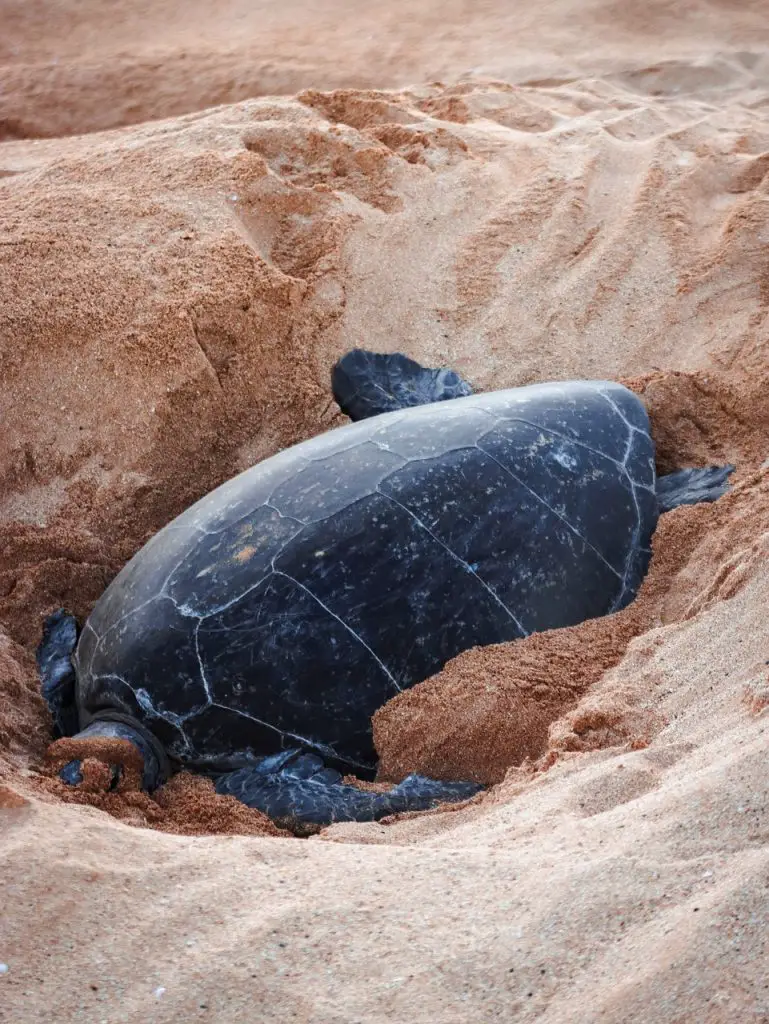
Here Is Something About The Turtles
Snapping Turtle
The Common Snapping Turtle, scientifically known as Chelydra s. serpentina, is a fascinating reptile found in various habitats across North America. Here’s a glimpse into its intriguing characteristics:
- Average Size: Ranging from 8 to 20 inches
- Average Lifespan: Impressive longevity of 50 to 75 years
- Habitat: Thrives in diverse environments including rivers, marshes, lakes, shallow ponds, and streams
- Diet: Known to consume fish, dead animals, insects, worms, small mammals, and even plants
- Physical Appearance: Easily recognizable by its imposing features such as a massive head, razor-like beak, long saw-toothed tail, keels on the shell, and robust legs with large claws
- Conservation Status: Considered of Least Concern
- Care Level: Requires intermediate to expert care
- Average Price: Typically priced between $20 to $40
Alligator Snapping Turtle
Meet the Alligator Snapping Turtle, scientifically known as Macroclemys Temmincki, a remarkable creature renowned for its distinct appearance and behavior:
- Average Size: Impressive dimensions ranging from 15 to 26 inches
- Average Lifespan: Surpasses 70 years, showcasing remarkable longevity
- Habitat: Typically found in deep water bodies
- Diet: Primarily feeds on fish, frogs, and even mice
- Physical Appearance: Boasts sharp jaws, a formidable beak, and an overall gray hue on its body
- Conservation Status: Classified as Endangered, highlighting the need for conservation efforts
- Care Level: Requires intermediate to expert care
- Average Price: Generally priced between $25 to $100
Musk Turtle
Discover the Musk Turtle, known scientifically as Sternotherus odoratus, a charming reptile with unique characteristics:
- Average Size: Typically ranges from 3 to 5 inches
- Average Lifespan: Exceeds 50 years, showcasing impressive longevity
- Habitat: Prefers permanent and slow-moving water bodies like rivers, ponds, streams, and clean water lakes
- Diet: Enjoys a diet comprising insects, amphibians, worms, small mammals, and greens
- Physical Appearance: Recognizable by its unmarked carapace, varying from black to dark brown or gray-green, with distinct yellow stripes on its head
- Conservation Status: Considered of Least Concern
- Care Level: Requires intermediate care
- Average Price: Typically priced between $20 to $100
Razorback Musk Turtle
Meet the Razorback Musk Turtle, scientifically known as Sternotherus Carinatus, a captivating species with distinct physical features:
- Average Size: Typically ranges from 5 to 6 inches
- Average Lifespan: Lives for more than 20 years, showcasing moderate longevity
- Habitat: Thrives in swamps and slow-moving water bodies adorned with vegetation
- Diet: Enjoys a diet comprising shellfish, mollusks, crustaceans, and other aquatic prey
- Physical Appearance: Boasts a prominent razor-like hump on its back, with a brown to olive carapace and gray skin adorned with black dots
- Conservation Status: Considered of Least Concern
- Care Level: Suitable for beginners
- Average Price: Generally priced between $60 to $500
Loggerhead Musk Turtle
Discover the Loggerhead Musk Turtle, scientifically known as Sternotherus minor, a captivating species with distinctive characteristics:
- Average Size: Typically ranges from 3 to 5 inches
- Average Lifespan: Lives for about 20 years, showcasing moderate longevity
- Habitat: Prefers habitats like snags, shallow areas of lakes, and ponds
- Diet: Enjoys a varied diet comprising worms, mollusks, insects, pellets, and leafy veggies
- Physical Appearance: Boasts large heads, gray skin with black speckles, and light brown shells with keels running along the center
- Conservation Status: Considered of Least Concern
- Care Level: Suitable for beginners
- Average Price: Generally priced between $100 to $250
Physical Appearance: Musk turtles are easily recognizable by their large heads, sporting grey skin adorned with black speckles. Their shells are a light brown hue with prominent keels running down the center.
Conservation Status: These charming creatures are classified as “Least Concern,” indicating a stable population.
Care Level: Musk turtles are well-suited for beginners, making them an excellent choice for novice turtle enthusiasts.
Average Price: Musk turtles typically range in price from $100 to $250.
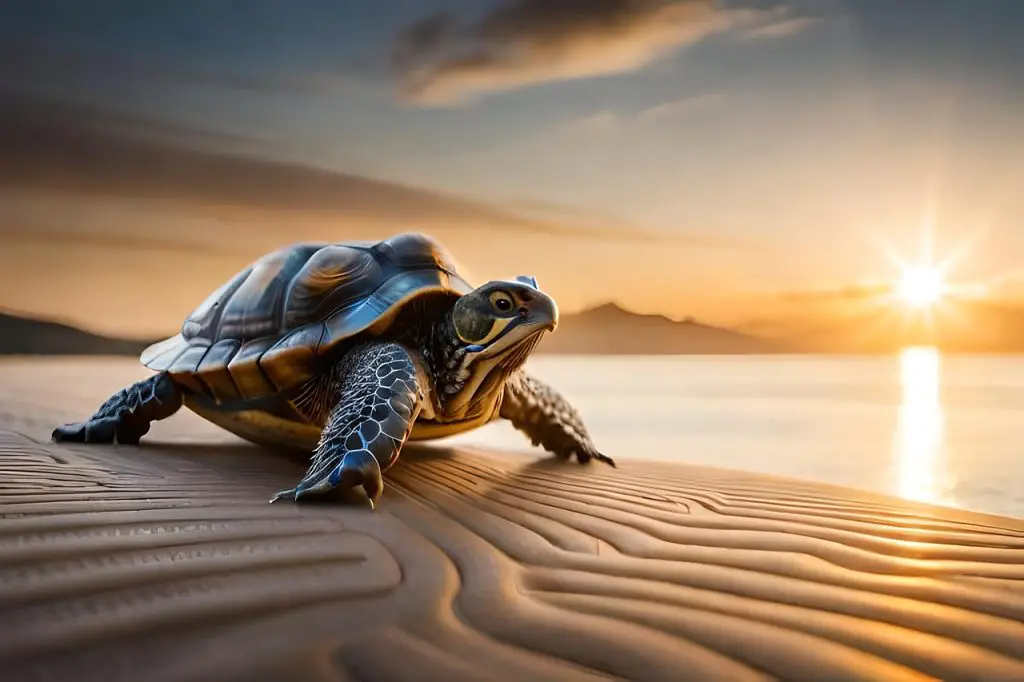
Stripe Neck Musk Turtle
Scientific Name: Sternotherus Minor Peltifer
Average Size: These turtles typically measure between 3 to 4 inches in length.
Average Lifespan: With proper care, the Stripe Neck Musk Turtle can live for around 20 years.
Habitat: You’ll find these turtles thriving in wetlands, creeks, springs, ponds, and lakes.
Diet: Their diet includes a variety of foods such as beetles, flies, dead fish, clams, and algae.
Physical Appearance: Sporting a brown to dark olive shell with a strongly arched shape, these turtles have a distinct appearance. Their yellow plastron stands out, and their upper and lower shells may feature random spots or remain spotless.
Conservation Status: The Stripe Neck Musk Turtle is not extinct and is considered to be of least concern.
Care Level: With their beginner-friendly nature, these turtles are easy to care for.
Mud Turtle
Eastern Mud Turtle
Scientific Name: Kinosternon s. Subrubrum
Average Size: Eastern Mud Turtles typically range from 3 to 7 inches in size.
Average Lifespan: With proper care, they can live up to an impressive 50 years.
Habitat: These turtles prefer shallow, slow-moving clean bogs, marshes, rivers, and swamps.
Diet: Their diet consists of small fish, mollusks, and plants.
Physical Appearance: Common Musk Turtles have a plain appearance, featuring a somewhat flat carapace ranging in color from yellow to black. Their heads may exhibit white to yellow coloring.
Conservation Status: Eastern Mud Turtles are classified as “Least Concern,” indicating a stable population.
Care Level: These turtles are well-suited for beginners due to their easy care requirements.
Average Price: Eastern Mud Turtles typically range in price from $30 to $200.
Rough Footed Mud Turtle
Scientific Name: Kinosternon Hirtipes
Average Size: Rough Footed Mud Turtles typically measure between 5 to 7.5 inches in length.
Average Lifespan: With proper care, they can live between 20 to 50 years.
Habitat: These turtles prefer habitats such as mountain streams and low lakes.
Diet: Their diet includes fish, mollusks, insects, algae, and vegetation.
Physical Appearance: Like all mud turtles, Rough Footed Mud Turtles have short, fleshy barbels on their chin. Their carapace is brown or olive, matching the color of their skin and plastron.
Conservation Status: The Rough Footed Mud Turtle is classified as “Threatened,” highlighting the need for conservation efforts.
Care Level: Despite their threatened status, these turtles are suitable for beginners.
Yellow Mud Turtle
Scientific Name: Kinosternon Flavescens Flavescens
Average Size: Yellow Mud Turtles typically measure between 3 to 5 inches in length.
Average Lifespan: With proper care, they can live for more than 40 years.
Habitat: These turtles inhabit ponds, rivers, marshes, water-filled ditches, sloughs, lakes, and flooded fields.
Diet: Their diet consists of crustaceans, mollusks, small fish, and insects.
Physical Appearance: Named for the yellowish appearance around their faces and plastron, Yellow Mud Turtles have olive carapaces with no distinct markings.
Conservation Status: Yellow Mud Turtles are classified as “Least Concern,” indicating a stable population.
Care Level: These turtles are best suited for intermediate-level turtle enthusiasts.
Average Price: Yellow Mud Turtles typically range in price from $35 to $300.
Striped Mud Turtle
Scientific Name: Kinosternon baurii
Average Size: Striped Mud Turtles typically measure between 4 to 5 inches in length.
Average Lifespan: With proper care, they can live for up to 50 years.
Habitat: These turtles prefer brackish water sources such as swamps and wetlands.
Diet: Their diet includes leafy greens, insects, and worms.
Physical Appearance: Sporting oval-shaped shells that are dark brown with yellow stripes, Striped Mud Turtles have a distinctive appearance.
Conservation Status: Striped Mud Turtles are classified as “Least Concern,” indicating a stable population.
Care Level: These turtles are well-suited for beginners due to their easy care requirements.
Average Price: Striped Mud Turtles typically range in price from $75 to $450.
Desert Box Turtle
Scientific Name: Terrapene Ornata Luteola
Average Size: Between 4 and 6 inches
Average Lifespan: Approximately 30 to 40 years
Habitat: Flourishing in open grasslands and arid regions
Diet: Their menu includes cactus, fruits, various plants, as well as beetles and grasshoppers.
Physical Appearance: Adorned with domed shells ranging from brown to red, these box turtles exhibit thin stripes traversing their carapaces.
Conservation Status: These unique turtles face threats, classified as “Threatened” due to habitat loss and other environmental pressures.
Care Level: With their resilient nature, Desert Box Turtles are ideal for beginners, offering a fascinating introduction to turtle care.
Average Price: Acquiring one of these remarkable creatures may cost between $300 and $400.
Three-Toed Box Turtle
Scientific Name: Terrapene Carolina Triunguis
Average Size: Typically measuring between 5 and 7 inches
Average Lifespan: With proper care, they can live for an impressive century.
Habitat: Found in woodland, grassland, and meadow habitats.
Diet: Their diet consists of worms, larvae, grasshoppers, and crickets.
Physical Appearance: Boasting a highly domed shell, Three-Toed Box Turtles sport olive to brown carapaces and yellow plastrons. Their distinctive feature lies in the three claws adorning their rear legs.
Conservation Status: While not extinct, their conservation status warrants attention, encouraging conservation efforts.
Care Level: Much like Desert Box Turtles, Three-Toed Box Turtles are suitable for beginners, offering a rewarding experience in turtle care.
Average Price: The cost of these charming turtles typically ranges between $130 and $450.
Florida Box Turtle
Scientific Name: Terrapene carolina bauri
Average Size: Ranging from 4 to 8.5 inches
Average Lifespan: With proper care, they can live for up to half a century.
Habitat: They inhabit forests, swamps, and marshes.
Diet: Their diet includes dark leafy vegetables, plants, worms, and insects.
Physical Appearance: The Florida Box Turtle is characterized by its high dome and keeled carapace. They are recognizable by the red lines adorning their upper shells or the stripes around their eyes.
Conservation Status: Classified as “Vulnerable,” highlighting the need for conservation efforts to protect their populations.
Care Level: Due to their specific requirements, caring for Florida Box Turtles is recommended for experienced turtle enthusiasts.
Average Price: The price of these captivating turtles ranges from $270 to $500.
Gulf Coast Box Turtle
Scientific Name: Terrapene carolina major
Average Size: Typically measuring between 5 and 8.5 inches
Average Lifespan: With proper care, they can live for a century.
Habitat: Preferring brackish water, swamps, and estuaries.
Diet: Their diet consists of worms, crickets, insects, collard greens, and various vegetables.
Physical Appearance: Gulf Coast Box Turtles are adorned with dark brown to black shells adorned with yellow dots or stripes. Their shells also feature a distinct fluted edge.
Conservation Status: While not extinct, their populations require monitoring, placing them under the category of “Not Extinct.”
Care Level: Intermediate-level care is recommended for Gulf Coast Box Turtles due to their specific habitat needs.
Average Price: Acquiring a Gulf Coast Box Turtle may cost between $120 and $450.
Before You Go…
Absolutely! Choosing a native turtle species for a pet is often recommended for several important reasons. Firstly, native turtles are already acclimated to the local climate, habitat, and environmental conditions. This means they are more likely to thrive and adapt well to their surroundings, reducing the risk of stress-related health issues.
Secondly, native turtles play crucial roles in their ecosystems, contributing to local biodiversity and ecological balance. By keeping native species as pets, you help support the conservation of these important animals and their habitats.
Furthermore, native turtles are often easier to care for because their dietary and environmental needs closely match what is readily available in their natural habitat. This can simplify the process of providing appropriate care and ensure the health and well-being of the pet.
Lastly, keeping native turtles helps prevent the introduction of invasive species, which can have harmful impacts on local ecosystems if released or escape into the wild.
In summary, choosing a native turtle species for a pet is not only beneficial for the animal’s welfare but also contributes to the preservation of local biodiversity and ecosystems. It’s a win-win situation for both the pet owner and the environment!
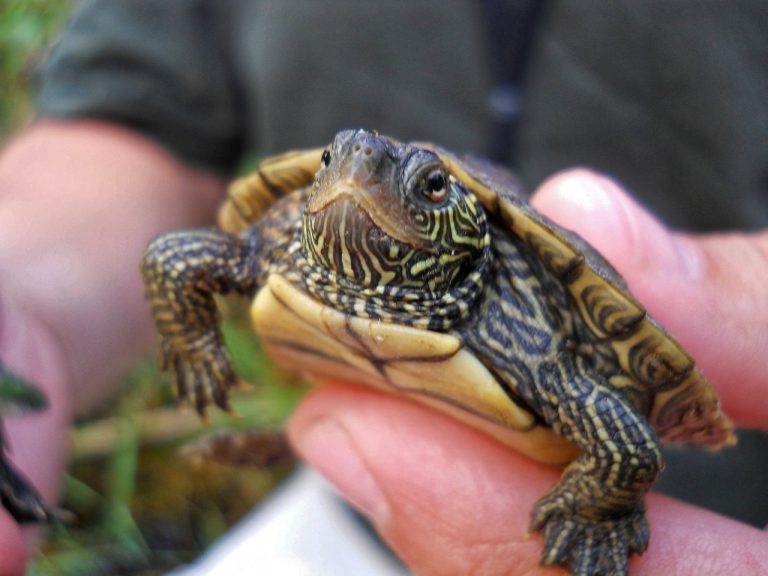
![How Do Sea Turtles Mate? [FAQs Answered]](https://spreadhapiness.com/wp-content/uploads/2024/03/mate-1-768x576.jpg)
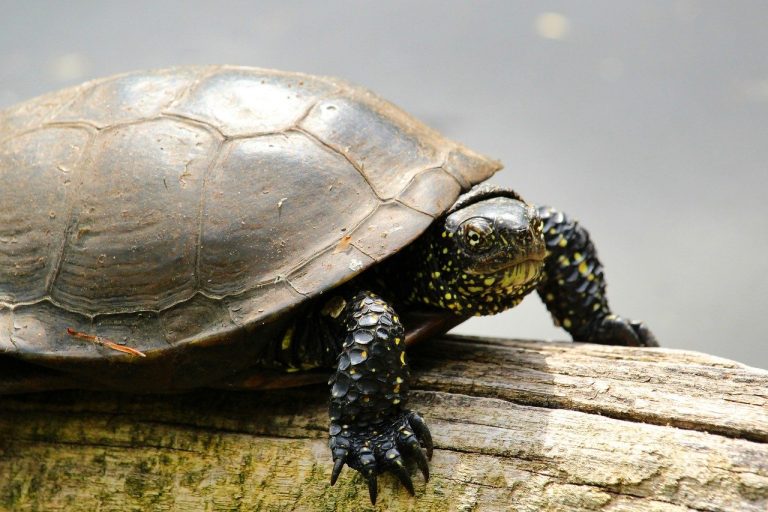
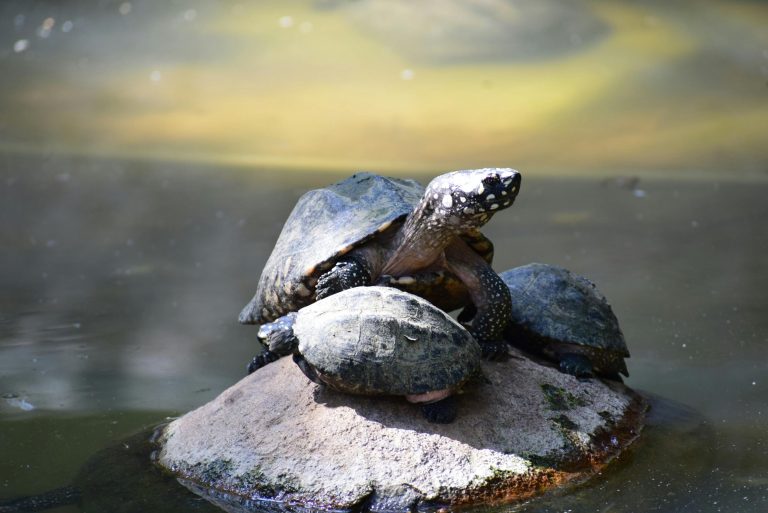
![Can Turtles Eat Worms? [Safe Worms List]](https://spreadhapiness.com/wp-content/uploads/2024/03/worms-3-768x499.jpg)
